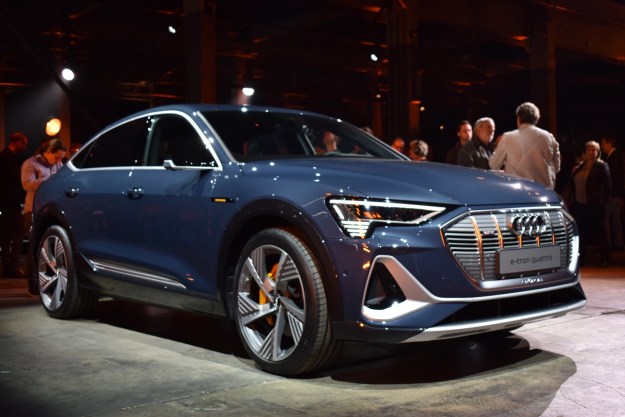Most people may not notice it, but the Kia Sportage has been around for quite awhile. It started out in the 1990s as a sort of Korean equivalent to the Geo Tracker, then grew into a more respectable compact crossover in its second and third generations. Now, Kia wants its smallest crossover to be more than just respectable.
After an initial European reveal, the 2017 Kia Sportage debuted at the 2015 Los Angeles Auto Show. Kia hopes more extroverted styling and a longer list of tech options will help the new model stand out in a very crowded and competitive segment.
The most noticeably new thing about the Sportage is its styling. That face is hard to forget. Kia’s signature “tiger-nose” grille still gets a prominent place up front, flanked by prominent fog lights and headlights pushed to the tops of the fenders. While the front end is pretty blunt, nearly everything else about the Sportage, from the shape of the headlights to the plunging hood and raked roofline, is much more car-like.
The 2017 Sportage will launch with two powertrain options. Base models will get a 2.4-liter four-cylinder engine with 181 horsepower and 175 pound-feet of torque, and a 2.0-liter turbocharged four with 241 hp and 260 lb-ft will be optional. A six-speed automatic transmission comes with both engines, with either front-wheel drive or all-wheel drive. Kia also says it made some adjustments to the steering and suspension to add some sport to the Sportage.
The interior gets a much tamer styling update than the exterior. Kia says the dashboard is split horizontally into “display” and “control” zones, but that just means items like the center-stack touchscreen and HVAC controls end up where you’d expect them. Not that there’s anything wrong with that.
A 5.0-inch touchscreen is standard on the base LX model, while a 7.0-inch screen is available on the EX and up as part of Kia’s UVO3 infotainment system. This includes Apple CarPlay and Android Auto compatibility, plus the UVO eServices telematics service. The Sportage is the first model to get the UVO3 system, although it will likely spread across the range pretty soon.
An eight-speaker Harman Kardon audio system is also available, as is an automatic power tailgate. Kia also loaded up the 2017 Sportage with electronic driver aids, including automatic braking, lane-departure warning, blind-spot monitoring with lane-change assist, and rear cross-traffic alert.
The 2017 Kia Sportage will go on sale in the U.S. next year. Pricing will be announced closer to the on-sale date.
Editors' Recommendations
- Kia EV5: rumored pricing, design, range, features, and more
- 2023 Kia Niro EV first drive review: Practical doesn’t have to bore you to tears
- Volkswagen’s electric ID.Life concept car doubles as a gaming console
- Hyundai Sonata Hybrid’s solar roof can deliver up to 700 miles of ‘free’ driving
- Pint-sized 2021 Kia Seltos crossover could be a great tech value


